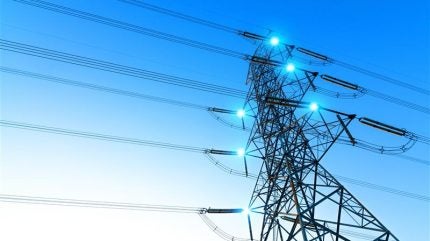
In recent years, global power distribution networks have encountered a multitude of challenges that threaten their efficiency and reliability, including natural disasters, extreme weather events, power outages, low grid resilience, and an ageing infrastructure.
This year has already seen a major power outage in the Iberian Peninsula , when an abrupt loss of power generation at the country’s Granada substation, rapidly followed by failures at Badajoz and Seville, was the cause of a major blackout on 28 April, impacting Spain, Portugal, and the south of France, and causing widespread disruption. While the exact cause is currently being investigated, this incident highlights the need for more robust and resilient power grids capable of withstanding disturbances and disruptions.
Compounding these issues is the ageing infrastructure that many countries rely on, increasingly unable to meet modern demands, and struggling to integrate renewable energy sources into the grid, despite a growing global emphasis on sustainable energy solutions. New loads, such as those from photovoltaic (PV) systems and electric vehicle (EV) charging stations, are surging, placing additional strain on traditional power distribution systems, which have historically operated under a passive operations and maintenance (O&M) model.
However, this model is proving inadequate in the face of these new challenges, necessitating a shift towards more proactive and adaptive strategies. The integration of new technologies and the modernisation of infrastructure are essential to enhance grid resilience, accommodate new energy loads, and support the transition to a more sustainable energy future.
IDS is meeting the challenge
Huawei’s Intelligent Distribution Solution (IDS) addresses these challenges by leveraging advanced technologies and a robust framework. The system employs a ‘cloud-pipe-edge-pipe-device’ architecture, which facilitates seamless communication and data flow between different components of the power distribution system, ensuring that data can be processed rapidly and effectively at various levels of the network.
Additionally, IDS integrates ICTs such as the High-speed Power Line Carrier (HPLC) and the Edge Computing Unit (ECU) to deliver transparent sensing and proactive O&M. The HPLC enables efficient data transmission over existing power lines, while the ECU processes data closer to the source, enhancing responsiveness and reducing latency in operations. By delivering transparent sensing capabilities, IDS allows for real-time monitoring and diagnostics of the distribution network. This proactive approach means that faults can be detected and addressed much more quickly than traditional methods, significantly shortening response time to outages and enhancing distribution network resilience.
This resilience is crucial for maintaining service continuity and reliability in challenging conditions, and the implementation of IDS has already led to tangible improvements in user satisfaction; by minimising the time taken to detect and respond to power outages, reduced to as little as one minute in China, the system ensures that customers experience fewer disruptions. Additionally, IDS has achieved a reduction in line loss rates by approximately 20%, which not only improves operational efficiency but also contributes to more sustainable energy use.
New developments at CIRED 2025
Last month at CIRED 2025 – the 28th Conference and Exhibition on Electricity Distribution in Geneva, Switzerland – Huawei announced a new, tailored IDS feature to tackle the issue of ‘unobservable, unmeasurable, and uncontrollable devices and environments in the power distribution room.’ This addition to IDS is designed to tackle some of the most pressing issues of the day, in terms of extreme weather events and natural disasters.
AI and Internet of Things (IoT) sensing devices are used to build an environment sensing network for power distribution rooms, with AI processing and real-time response. This allows not only for real-time alerts of extreme weather events but also provides notice where preventive maintenance can be carried out, helping customers to mitigate the impact of downtime and better manage essential power supplies.
During CIRED 2025, alongside the Institution of Engineering and Technology (IET), Huawei held an IDS Rump Session to share its practical experience in working with partners, helping customers with their digital and intelligent transformation of distribution networks. A long-time supporter of international standards, Huawei took a vital role in the 5th meeting of the IEEE P2413.2 Working Group, aiming to both promote standardisation and international development of the power industry, while also driving the construction of distribution communication networks, thus solving the global issues of medium-voltage backhaul and 400V low-voltage transparency. The new IDS features assist customers in implementing transparent management of low-voltage 400V devices.
Huawei’s IDS represents a significant advancement in the management and operation of power distribution networks. By leveraging cutting-edge technologies and a strategic architectural approach, the IDS enhances operational efficiency while also fortifying the resilience of power infrastructure against many different, modern challenges.
For more information, visit https://e.huawei.com/en/topic/electric-power/intelligent-distribution-solution

